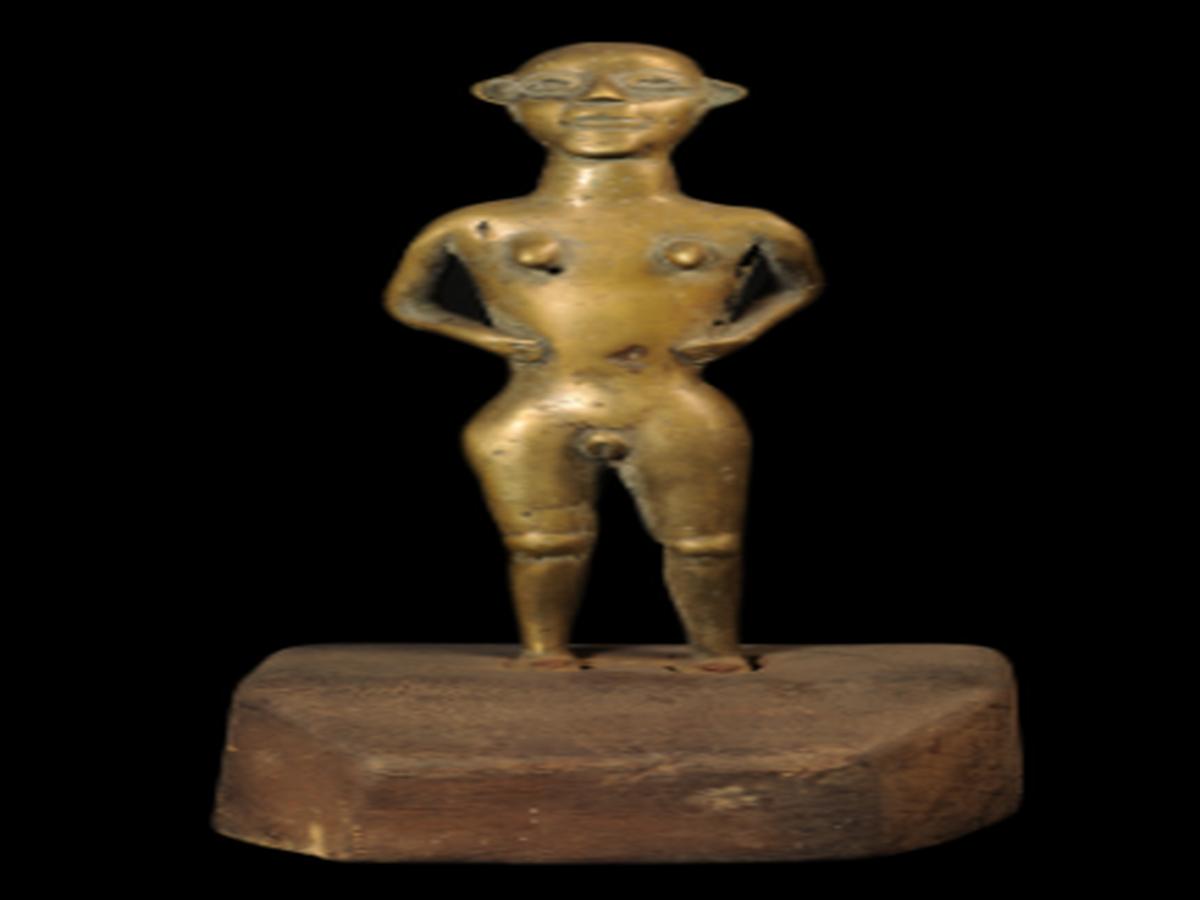State
Tribe Name
Art Type
short description
This contemporary Konyak Naga metal sculpture embodies a social history that speaks culturally and sociologically about the Konyak Naga tribe, possibly being one of the most noted tribes of Nagaland, mostly residing in Mon District. The Konyaks are famous for their color and vibrancy of customs, ceremonial regalia, and traditional artistic expression in metals and woods. So this effigy conveys the technical excellence of artistry and means of passing on a strongly ingrained moral or value of the tribe. The metal effigy shows a woman on a pedestal of wood. The vertical position denotes dignity and grace, symbolizing respect for women in Konyak society. While men had always led warrior and headhunting acts, women were recognized in Konyak culture as designers, agriculture workers, and keepers of oral history and rituals of the entire community
Thumbnail

Filter Postion
Left
Filter Background
Off
Theme
Filter Header Image

content
Image

description
This contemporary Konyak Naga metal sculpture embodies a social history that speaks culturally and sociologically about the Konyak Naga tribe, possibly being one of the most noted tribes of Nagaland, mostly residing in Mon District. The Konyaks are famous for their color and vibrancy of customs, ceremonial regalia, and traditional artistic expression in metals and woods. So this effigy conveys the technical excellence of artistry and means of passing on a strongly ingrained moral or value of the tribe. The metal effigy shows a woman on a pedestal of wood. The vertical position denotes dignity and grace, symbolizing respect for women in Konyak society. While men had always led warrior and headhunting acts, women were recognized in Konyak culture as designers, agriculture workers, and keepers of oral history and rituals of the entire community.
The very simple but expressive treatment of the effigy finds its place within tradition, Lonyak, and is symbolic rather than realistic. Female effigies of this type would serve either to perform rituals or commemorate ancestors in morungs (men's community houses) or be set up in their ancestral houses to honour clan or family matriarchs. On the other hand, the figure's grounding upon the wooden pedestal as a linking link to earth only furthers the common theme in tribal sculptural works to express life, fertility, and lineage. Such artifacts exist today, preserved in various museums, including the Indian Museum in Kolkata so as to gain precious insights into gender representations, Konyak Naga's belief systems, and their artistic expressions
The very simple but expressive treatment of the effigy finds its place within tradition, Lonyak, and is symbolic rather than realistic. Female effigies of this type would serve either to perform rituals or commemorate ancestors in morungs (men's community houses) or be set up in their ancestral houses to honour clan or family matriarchs. On the other hand, the figure's grounding upon the wooden pedestal as a linking link to earth only furthers the common theme in tribal sculptural works to express life, fertility, and lineage. Such artifacts exist today, preserved in various museums, including the Indian Museum in Kolkata so as to gain precious insights into gender representations, Konyak Naga's belief systems, and their artistic expressions
Image Mode
landscape
promoted
On
Verified
Off
